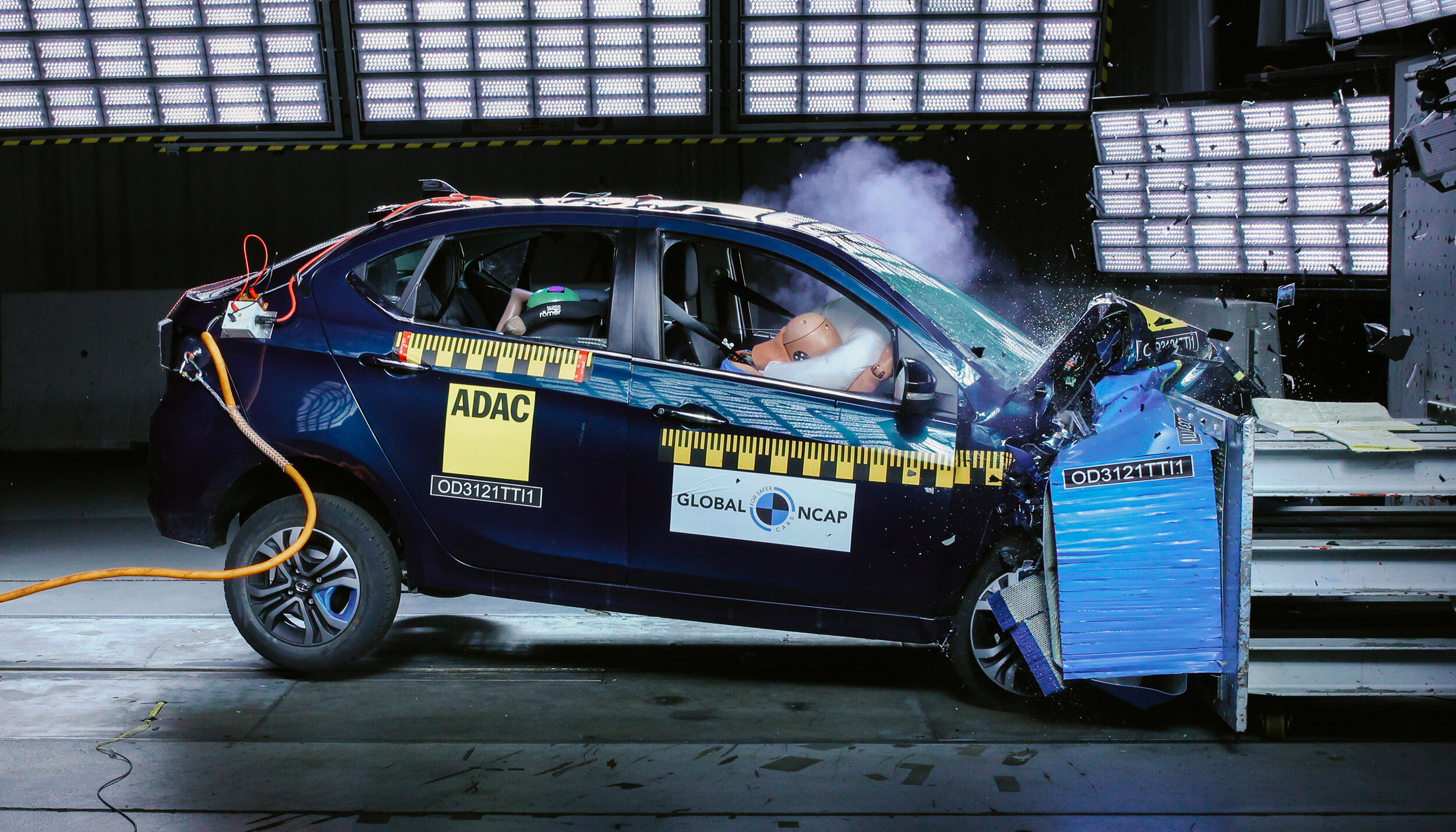Report by Paridhi Agarwal
The results of the first ever Bharat NCAP (BNCAP) car crash tests were released on 20th December 2023.
These cars were the first ones to be tested by the new NCAP developed in India.
Previously, India used global NCAP to give star ratings for the safety of the cars produced in India. The program was launched by the Union Transport Minister Nitin Gadkari on 22nd August 2023 and commenced on 1st October 2023 in Pune.
Several cars from prominent car brands like Kia, Hyundai, Mahindra, Maruti Suzuki, Toyota and Tata have been tested under this program till now. Tata Harrier and Safari have received the highest rating of 5 stars in the tests performed.
What is NCAP and how is it conducted?
Bharat New Car Assessment Program or BNCAP is a star rating system to crash test cars and rate them based on its results. Under this newly developed program, manufacturers of automobiles will be nominating their car voluntarily for the tests. These crash tests will be conducted under an international standard developed solely for these tests. The program came into effect on 1st October 2023 and India is now the fifth country in the world to have its own rating system for crash testing cars. The crash testing of these cars will be conducted at the Automotive Research Association of Pune.
Currently, more than 30 requests have been made from different manufacturers for testing their car models. The cost of crash testing a car is about ₹60 lakh under Bharat NCAP. This makes BNCAP one of the cheapest crash testing rating systems in the world. Most global NCAP require around ₹2.5 crore to crash test and rate the cars. Three primary categories will be covered by the crash tests: Fitment of Safety Assist Technologies, Adult Occupant Protection (AOP), and Child Occupant Protection (COP). Additionally, each vehicle will now undergo three tests- tests of Front Impact, Side Impact, and Side Pole Impact.
Adult Occupant protection- Tests are carried out to assess the vehicle’s ability to protect the adult driver and any passengers, as well as the safety and quickness of the rescue.
Child Occupant Protection- The test of Child Occupant Protection covers three main parts:
· The protection covered by child restraint systems in the front and side crash tests.
· The car’s ability to take in child restraints of various designs and sizes.
· The availability of resources for safe transportation of children in the vehicle.
Safety Assist Technologies- Technologies which help the driver to drive safely and avoid accidents. These include technologies like- Automatic Emergency Braking, Forward Collision Warning, Sensors and cameras for Parking.
Ratings
The Bharat NCAP crash test rating follows identical methods used by international agencies, and a star rating in the range of 1 to 5 will be awarded, with 1 being the lowest and 5 being the highest. A car will only receive a three-star or high rating if it comes equipped with electronic stability control and front seat belt reminders as standard. Adult occupant protection (AOP) has a maximum score of 32 points, while child occupant protection (COP) has a maximum rating of 49 points.
The cars eligible for this test should have a maximum total weight of 3.5 tonnes and should either be imported or manufactured in the country. BNCAP will also be testing and rating CNG and electric cars in India.
Difference between BNCAP and GNCAP
The BNCAP has mainly been developed on the standards and procedures used by GNCAP. There is only one difference between the 2 programs- the maximum points scored for Adult Occupant Protection (AOP). While the GNCAP rates AOP out of maximum 34 points, the BNCAP rates AOP out of only 32 points. The GNCAP awards 2 extra points for the front and rear seat belt reminders.
Image credit: Official website of global NCAP

